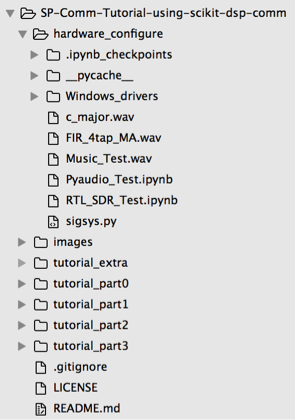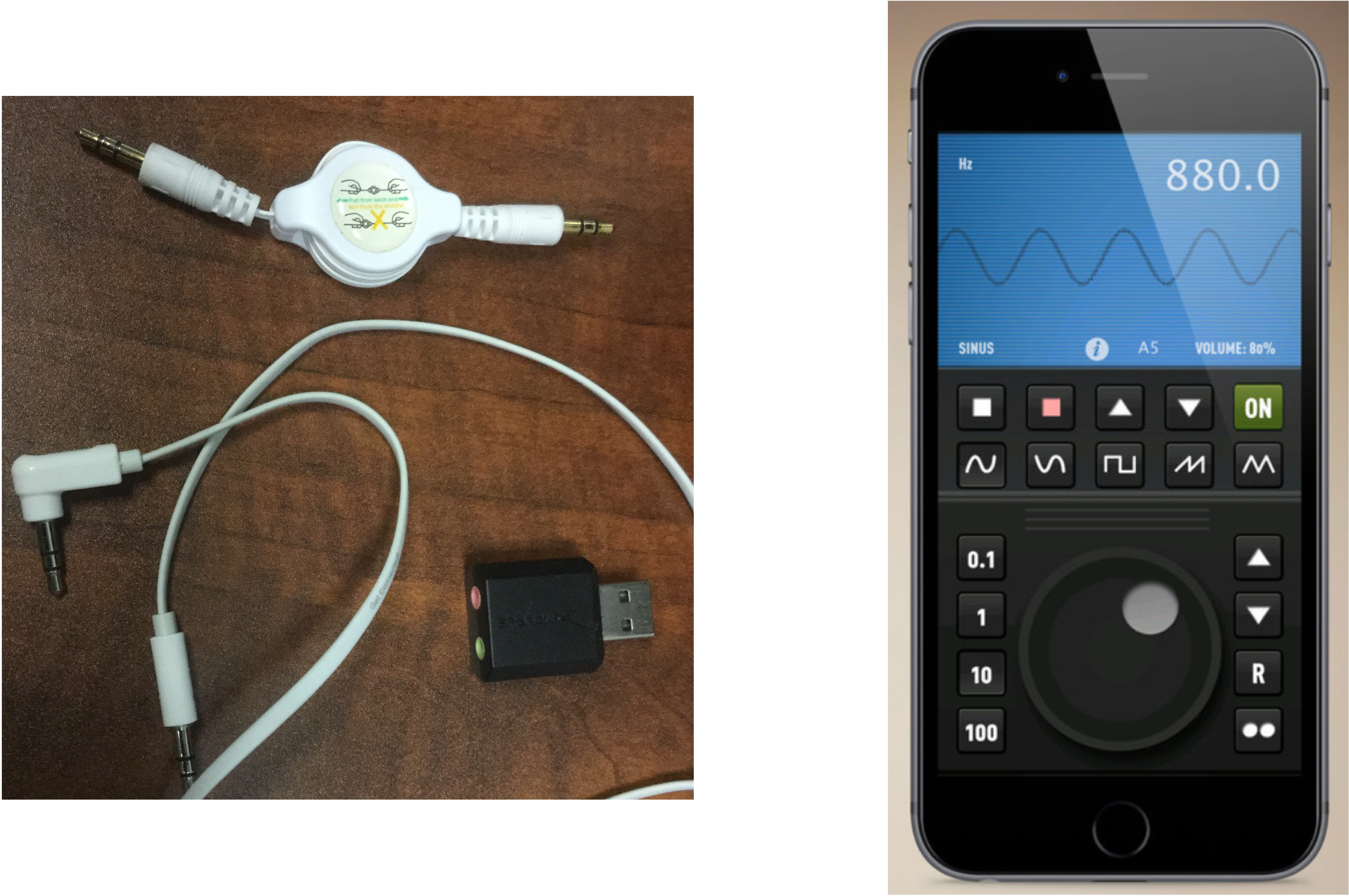A tutorial on signal processing and communications using scikit-dsp-comm, including hardware interfacing to a software defined radio (SDR) and the PC audio subsystem.
Note: To immediately jump into OS specific hardware and software configuration visit the wiki pages, but I suggest cloning the repo before you start setting up any hardware drivers, especially for Windows users.
git clone https://github.com/mwickert/SP-Comm-Tutorial-using-scikit-dsp-comm.gitThis project provides the set-up instructions and content needed for the Scipy 2017 tutorial on signal processing and communications using the scikit-dsp-comm package. To get the most out of this tutorial you will want to take the time to install and configure both software and hardware interface drivers for the RTL-SDR low-cost software defined radio platform and Pyaudio.
New and Updated 7/12/2017: As promised I have updated and added some new files, including some embedded solutions.
New 7/11/2017: The final push of content for Part3 is done. There are large binary files to pull down to insure you have waveform data to process should the RTL-SDR dongle not work properly for you. Get this ASAP, as the network may be slow at the start of the tutorial.
New 7/8/2017 package install command line: The two new modules
pyaudio_helper.pyandrtlsdr_helpr.pyhave dependencies that will not be satisfied if you do not have the hardware interfaces installed. Having these dependencies met is not a show stopper as far as the tutorial goes. The packaging has been reconfigured to accommodate this condition, but the pip install command line must now be:pip install -e .[helpers]from the location of the package repo.
Newly added: To drive signals into PyAudio you should have a 3.5 mm audio cable to interface your cell phone to your PCs audio input jack (perhaps on an external sound card ) . Add to this a signal generator app for your cell phone. On the iPhone I like using (https://www.cateater.com/signalgenerator/). Screen shots of these items are at the bottom of this page.
- Python 3.6 preferred, but Python 2.7 also works, as this is the origin of scikit-dsp-comm
- I recommend using Anaconda as your Python base, its ability to use virtual environments
-
- Note a virtual environment is however not included in the repo
- The following Scipy packages are required:
numpy,matplotlib,scipy,ipython,pyqt, andjupyter, as well as related dependencies; with the full install of Anaconda you are good, less the packages you install under the hardware set-up - PIP install (pending conda install)
scikit-dsp-comm-
Best Option: With a bash shell, command prompt, or power shell sitting at the location of the clone
pip install -e .[helpers]; This is known as an editble install, which means if you pull new versions in to the local repo you can quickly reinstall the changes. This is recommended for the tutorial, as updates may come on Monday evening or Tuesday morning of the conference. I will use Slack to alert you. -
To import the package, or portions of it, use for example:
import sk_dsp_comm.sigsys as ss -
To test
PyAudioand the newscikit-dsp-commmodulepyaudio_helpertype the following at an IPython/Jupter notebook prompt:
-
In [1]: import sk_dsp_comm.pyaudio_helper as pah
In [2]: pah.available_devices()
Index 0 device name = Built-in Microphone, inputs = 2, outputs = 0
Index 1 device name = Built-in Output, inputs = 0, outputs = 2
Index 2 device name = USB Audio Device, inputs = 1, outputs = 2Your list of audio devices found will depend upon your system configuration; I clearly have a USB audio device plugged into my MacBook
- Clone this repo to some convenient location on your PC:
git https://github.com/mwickert/SP-Comm-Tutorial-using-scikit-dsp-comm.git. This will place a directory structure for testing the hardware and also all the folders which contain the lecture material and Jupyter notebooks for hands-on exercises
- The lecture material and Jupyter notebooks are in development, and will appear over time as the conference approaches. The absolute newest version will be pushed just before the tutorial; using
git fetchand/orgit pullyou will be see the changes and then them merge them with your local repo
-
Visit the Wiki pages and choose your operating system. Python packages related to the configuration will also be installed in this process
-
At the end of the installation process you will have the opportunity to test you install using content from the
hardware_configurationfolder

